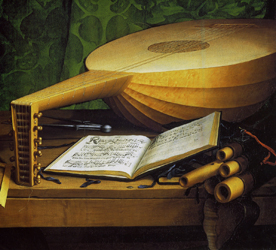

Although humans imitate God in their use of the Quadrivium to study the world, the results of the human use of discursive reason, while gaining positive knowledge, are necessarily limited and lack precision since they are based on finite senses and reason. Nicholas of Cusa discusses the limitiations of the use of the Quadrivium by humans. In reference to astronomy, he states:
...you will recognize that the art of calculating lacks precision, since it presupposes that the motion of all the other planets can be measured by reference to the motion of the sun. Even the ordering of the heavens --with respect to whatever kind of place or with respect to the risings and settings of the constellations or to the elevation of a pole and to things having to do with these-- it is not precisely knowable. Since no two places agree precisely in time and setting, it is evident that judgments about the stars are, in their specificity, far from precise.*
This notion of limitation suggests an explanation for the observation that the various faces of the polyhedral sundial on the upper shelf display different times:

Following Cusa, all measurements are approximations and limited by time and place.

Similarly the lute with its broken string and the case of different flutes may be related to Cusa's discussion of limitations of human music which can only be an approximation of God's "supremely concordant harmony":
...Conformably to the rule, there is no precision in music. Therefore, it is not the case that one thing [perfectly] harmonizes with another in weight or length or thickness. Nor is it possible to find between different sounds of flutes, bells, humans voices, and other instruments comparative relations which are precisely harmonic-- so [precisely] that a more precise one could not be exhibited. Nor is there, in different [of the same kind]-- just as also not in different men-- the same degree of true comparative relations; rather, in all things difference according to place, time, complexity , and other [considerations] is necessary. *
The lute can be seen as a symbol of political discord. Similarly the Lutheran Hymnbook is likely a reference to the doctrinal differences dividing Europe.
Nicholas of Cusa relates the limitations of man's use of the Quadrivium to the essential uniqueness of the individual: "No one [human being] is as another in any respect --neither in sensibility, nor imagination, nor intellect, nor in an activity (whether writing or painting or an art)."* In an another context, Cusa argues that human vision is not only limited by external variables of time and place, but it is also conditioned internally by mood, personality, or age.* This awareness of the uniqueness of the individual can be related to the contrast between the active Dinteville and the contemplative de Selve:

|

|
The opposition signified by the respective attributes of the dagger and the book is reinforced by Holbein's characterization of the two figures. The ruddy complexioned Dinteville stands expansively, while the pale de Selve appears withdrawn as he encloses himself in his somber coat. Here, perhaps, Holbein intended a contrast in temperaments between the sanguine Dinteville and the melancholic de Selve. The red of Dinteville's blouse, the color traditionally associated with the sanguine temperament, is contrasted with the black of de Selve's, the color related to the melancholic.*
The theme of human limitation is most assertively stated by Holbein in the anamorphic skull that hovers in the foreground of the painting.
